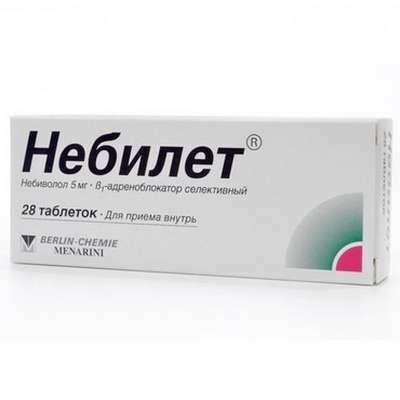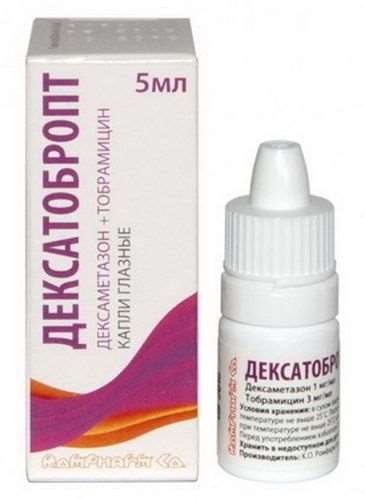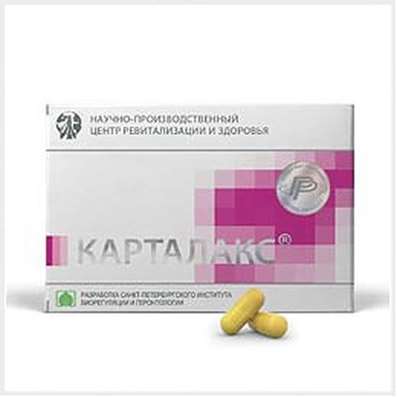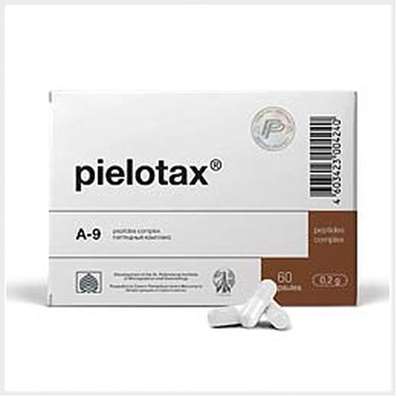Instruction for use: Beloderm Express
I want this, give me price
ATX Code D07AC01 Beclometasone
Active substance: Betamethasone
Pharmacological group
Glucocorticoids for external use [Glucocorticosteroids]
Nosological classification (ICD-10)
L13.9 Bullous changes, unspecified
Bullous dermatitis
L20 Atopic dermatitis
Itchy atopic eczema, Common neurodermatitis, Allergic skin diseases, Allergic skin diseases of non-infectious etiology, Allergic skin diseases of non-microbial etiology, Allergic skin diseases, Allergic skin lesions, Allergic manifestations on the skin, Allergic dermatitis, Allergic diathesis, Allergic itching dermatosis, Allergic Skin Disease, Allergic skin irritation, Dermatitis allergic, Atopic dermatitis, Dermatosis allergic, Diathesis exudative, Skin Allergic Disease, Skin allergic reaction to medicinal and chemical preparations, Skin reaction to medication, Skin and allergic disease, Acute eczema, Chronic atopic dermatitis, Exudative diathesis, Itching allergic dermatosis
L20.8 Other atopic dermatitis
Constitutional neurodermatitis, Chronic neurodermatitis, Restricted neurodermatitis, Allergic eczema, Atopic eczema, Children's eczema, Diffuse neurodermatitis, Neurodermatitis, Neurodermatitis diffuse, Neurodermatitis limited, Neurodermatitis, Dermatosis of a neurogenic origin
L23 Allergic contact dermatitis
Allergic dermatitis, Purulent allergic dermatopathies, Contact allergic reaction, Contact allergic dermatitis, Photoallergic contact dermatitis
L24 Simple irritant contact dermatitis
Simple contact dermatitis
L25 Contact dermatitis, unspecified
Intertriginous dermatitis, Contact Eczema, Contact dermatitis, Contact dermatitis of non-microbial etiology, Contact dermatitis, Skin wetting surface, Fractures, Intertrigo,Skin Difficulty, Subacute and chronic contact dermatitis, Phlebotoderma, Simple contact dermatitis complicated by impetigo
L29 Itching
Itching with partial obstruction of the biliary tract, Dermatitis itchy, Dermatosis with persistent itching, Other itching dermatoses, Itching dermatoses, Itching allergic dermatosis, Itching dermatitis, Itching itch, Excruciating itching, Severe itching, Endogenous itching, Skin itching with dermatosis, Limited itching dermatitis, Itching of the skin, Itchy scalp, Itching eczema
L30.9 Dermatitis, unspecified
Allergic dermatoses complicated by a secondary bacterial infection, Anal eczema, Bacterial maturation, Varicose Eczema, Venous dermatitis, Inflammation of the skin, Inflammation of the skin upon contact with plants, Inflammatory Skin Diseases, Inflammatory skin reactions, Inflammatory processes of the skin, Hypostatic dermatitis, Fungal Eczema, Fungal dermatosis, Dermatitis, Dermatitis is stagnant, Dermatitis and eczema in the anal area, Dermatitis acute contact, Perianal dermatitis, Dermatosis, Dermatosis of the scalp, Dermatosis of psoriasis, Dermatosis with persistent itching, Dermatoses, Dermatoses itchy, Other itching dermatoses, Significant eczematous manifestations, Itching with, dermatoses, Itching eczema, True eczema, Skin reaction to insect bites,Skin itching with dermatosis, Constitutional eczema, Weeping eczema, Drowsing inflammatory skin disease, Dying Infectious-Inflammatory Skin Disease, Non-allergic dermatitis, Nummular eczema, Acute contact eczema, Acute inflammatory skin disease, Acute dermatosis, Acute severe dermatosis, Perianal dermatitis, Superficial dermatosis, Subacute Contact Eczema, Simple dermatitis, Occupational dermatitis, Psychogenic dermatosis, Bubble dermatitis of newborns, Pustular eruptions, Irritation and redness of the skin, Low-flammable eczema, Dry atrophic eczema, Dry eczema, Toxic dermatitis, Ear eczema like dermatitis, Chronic eczema, Chronic dermatosis, Chronic common dermatosis, Scaly papular dermatosis, Eczema, Eczema anal region, Eczema of the hands, Eczema Contact, Eczema lichenized, Eczema Nummular, Eczema acute, Eczema acute contact, Eczema subacute, Eczematous dermatitis, Eczema-like rashes, Ecome exogenous, Endogenous eczema, Gluteal dermatitis, Restricted itchy dermatitis
L40 Psoriasis
Chronic psoriasis with diffuse plaques, Generalized psoriasis, Psoriasis of the scalp, Psoriasis of the scalp, Generalized form of psoriasis, Psoriasis dermatitis, Psoriasis complicated by erythroderma, Invalidative psoriasis, Isolated psoriatic plaque, Exfoliative psoriasis, Psoriatic Erythroderma, Psoriasis with eczematosis, Hyperkeratosis in psoriasis,Inverse psoriasis,Psoriasis eczematous, Dermatosis of psoriasis, Psoriasis of the genitals, Psoriasis with lesions of hairy areas of skin, Erythrodermal psoriasis, Chronic psoriasis of the scalp, Chronic psoriasis, Ordinary psoriasis, Refractory psoriasis, Kebner phenomenon, Scaly lichen
L51 Erythema multiforme
Stevens-Johnson syndrome, Malignant exudative erythema, Multiforme exudative erythema, Erythema multiforme, Multiforme exudative erythema, Stevens-Johnson Syndrome, Exudative multiform erythema, Erythema is polymorphic
L53 Other erythematous conditions
Variable erythrokeratodermia, Malignant exudative erythema, Erythema, Erythematous, Erythroderma, Erythema from diapers
L56 Other acute skin changes caused by ultraviolet radiation
Impact of UV rays, Acute skin changes caused by ultraviolet radiation, Sun Dermatitis, Photodermatitis, Photodermatosis, Dermatitis sunflower
L56.2 Photocontact dermatitis [berloque dermatitis]
Photoallergic contact dermatitis
L56.3 Solar Urticaria
Skin irritation after sun exposure, Sun Dermatitis, Dermatitis sunflower
L58 Radiation dermatitis radiation
Radiation injury of the skin, Radiation skin lesions, Radiation damage to the skin and mucous membranes, Skin lesion with radiation therapy, Irritation after exposure to X-rays, Radiation damage to the skin, Radio-epileleitis, Radiation acute syndrome
W57 Bite or sting with non-toxic insect and other non-venous arthropods
Allergic reaction to insect bites, Skin reaction after insect bite, Reactions to insect bites, Mosquito bite, Bite of bloodsucking insects, A bite of an insect, The bite of the wasp
Composition
Spray for external use 1 g (solution)
active substance:
Betametasone dipropionate 0.64 mg (0.064%)
Corresponds to 0.5 mg betametasone
Auxiliary substances: isopropanol - 400 mg; Carbomer 934P - 2.5 mg; Water - 596.86 mg; Sodium hydroxide - q.s.
Description of dosage form
Colorless, from transparent to slightly opalescent, a viscous solution with the smell of isopropanol.
pharmachologic effect
Pharmacological action - anti-inflammatory, antiallergic, glucocorticoid.
Pharmacodynamics
Betamethasone dipropionate is a synthetic SCS, which has anti-inflammatory, antiallergic, antiexudative, antipruritic and vasoconstrictive effects. When applied to the skin surface, it narrows the vessels, relieves itching, reduces the release of inflammatory mediators (from eosinophils and mast cells), IL-1 and -2, interferon gamma (from lymphocytes and macrophages), inhibits activity and lowers the permeability of the vascular wall. Interacts with specific receptors in the cytoplasm of the cell, stimulates the synthesis of matrix RNA, inducing the formation of proteins, incl. Lipocortin, mediating cellular effects. Lipocortin depresses phospholipase A2, blocks the release of arachidonic acid and the biosynthesis of endoperoxides, PG, leukotrienes (contributing to the development of inflammation, allergy and other pathological processes).
Pharmacokinetics
With external use of the drug in therapeutic doses, the transdermal absorption of the active substance into the blood is very low. The use of occlusive dressings, inflammation and skin diseases increase the transdermal absorption of betamethasone, which can lead to an increased risk of systemic side effects. Metabolized mainly in the liver. It is excreted by the kidneys and with bile.
Indications
Diseases of the skin, amenable to SCS therapy:
Eczema (various forms);
Atopic dermatitis / neurodermatitis;
Erythroderma;
psoriasis;
Bullous dermatoses;
Exudative erythema multiforme;
Photodermatosis (including sunburn);
Allergic contact dermatitis;
Contact dermatitis (including professional dermatitis);
Non-allergic dermatitis (including sunlight, radiation);
Reactions to insect bites;
Itching of various etiologies;
Discoid lupus erythematosus;
Red flat lichen.
Contraindications
Increased sensitivity to betametasone or any of the auxiliary components of the drug;
Bacterial (skin tuberculosis, skin manifestations of syphilis), fungal, viral (chickenpox, herpes simplex) skin diseases;
Cutaneous post-vaccination reactions;
Open wounds;
Trophic ulcers of the lower leg;
Rosacea;
Acne vulgaris;
skin cancer;
nevus;
Atheroma;
melanoma;
Hemangioma;
Xanthoma;
sarcoma;
Lactation period;
Children under 2 years.
pregnancy and lactation
The use of Beloderm® Express, a spray for external use, in pregnant women is allowed in cases where the intended benefit to the mother exceeds the risk to the fetus. In such cases, the drug should be administered under the supervision of a doctor, should be short and, if possible, be limited to small areas of skin.
If it is necessary to use the drug during lactation, breastfeeding should be stopped.
Side effects
When used in therapeutic doses, the drug is usually well tolerated, the side effects are absent or mild. As with other GCS, hypersensitivity reactions may develop (skin itching, burning, redness, dry skin, acne-like changes (steroid acne, perioral dermatitis, allergic contact dermatitis, hypopigmentation) .For prolonged use, and with occlusive dressings, maceration Skin, secondary infections, skin atrophy, hirsutism, hypertrichosis, telangiectasia, folliculitis, sweating, purpura .When applied to extensive body surfaces, it may cause systemic side effects of GCS (hyper Glycemia, reversible suppression of adrenal cortex function, manifestation of Isenko-Cushing syndrome).
In case of a hypersensitivity reaction or side effects, therapy should be discontinued and consult a doctor.
Interaction
The interaction of the Beloderm® express with other drugs is not known.
Dosing and Administration
Outwardly.
Beloderm® Express, a spray for external use, is sprayed onto the affected area of the skin in an amount necessary to cover the affected surface, 2 times a day. The duration of treatment depends on the effectiveness and tolerability of therapy and usually is no more than 4 weeks. During the year, a repeat of therapy is possible. In children and patients with skin lesions, treatment should not exceed 5 days. If the clinical improvement does not occur, it is necessary to clarify the diagnosis.
For a uniform coverage of a skin area of 100 cm2, 2 ml of spray should be applied, which corresponds to 1 mg of betametasone (i.e. 13 smooth and full pressure on the dispenser, the dose of the drug at one pressure on the dispenser is 0.15 ml and contains 0.075 mg of betametasone) .
Overdose
Symptoms: Acute overdose is unlikely, but with excessive or prolonged use of the drug, especially in children, on extensive skin surfaces, application to the skin with broken integrity or when applied under an occlusive dressing, a chronic overdose is possible, accompanied by hypercorticism (hyperglycemia, glucosuria, reversible oppression of function The adrenal cortex, the manifestation of the Itenko-Cushing syndrome).
Treatment: a gradual withdrawal of the drug and symptomatic treatment is recommended.
special instructions
Beloderm® Express in the form of a spray is preferred for use in the acute form of dermatosis, incl. Accompanied by exudation (the formation of wetting surfaces).
It is not recommended long-term external application of the preparation Beloderm® express on the skin of the face, tk. Possible development of rosacea, perioral dermatitis and acne. The course of treatment should not exceed 5 days.
Beloderm® Express should not be used in the eye area due to the likelihood of the drug getting on the mucous membrane, which can contribute to the development of cataracts, glaucoma, fungal infections of the eyes and exacerbation of herpetic infection.
Some areas of the body, such as axillae, inguinal folds, where there is a kind of natural occlusion, are more susceptible to the risk of streaking, so the continuous use of the drug in these areas of the skin should be short (no more than 4 weeks).
In the case of fungal or bacterial infection on the skin, an additional antibacterial or antifungal agent is necessary.
For children, the drug is prescribed only on strict indications and under medical supervision. Possible development of systemic side effects associated with betamethasone.
When using the drug in children, it is necessary to limit the total duration of treatment and exclude activities leading to increased resorption and absorption (warming, fixing and occlusive dressings, diapers).
When applying the drug on extensive surfaces and / or for occlusive dressing, it is possible to suppress the function of the hypothalamic-pituitary-adrenal system and the development of symptoms of hypercorticism, there may be a decrease in the excretion of growth hormone, an increase in ICP.
Impact on the ability to manage vehicles and mechanisms. Does not affect.
Form of issue
Spray for external use 0,05%. For 20 and 50 ml of the drug in a white bottle of HDPE with a plastic sprayer and a lid. 1 fl. Placed in a cardboard box.
Terms of leave from pharmacies
Without recipe.
Storage conditions
At a temperature not exceeding 25 ° C.
Keep out of the reach of children.
Shelf life
2 years.
Do not use after the expiry date printed on the package.

 Cart
Cart





